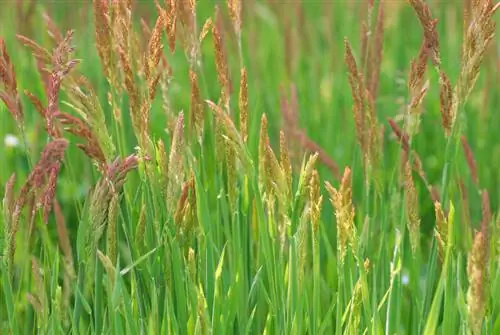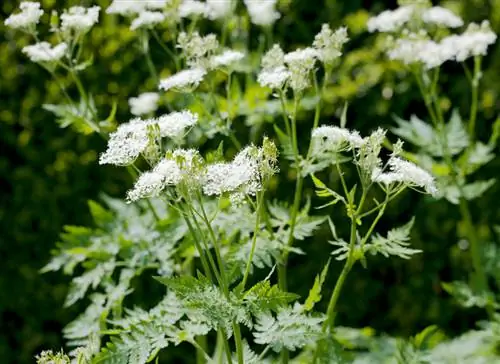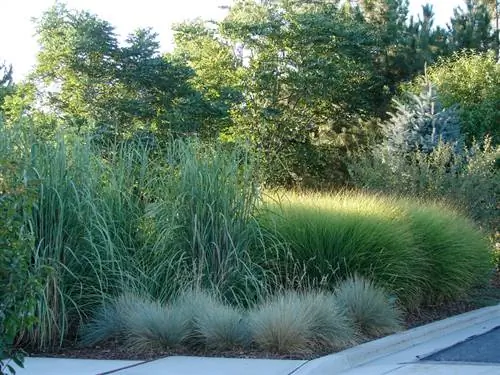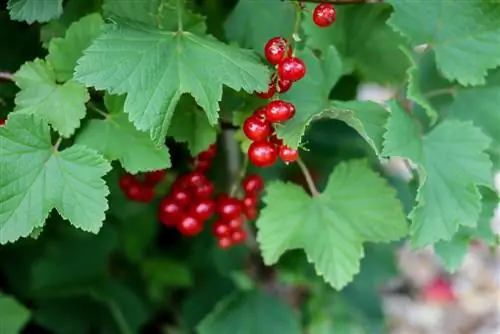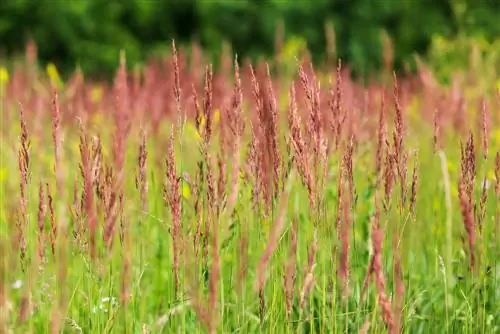- Author admin [email protected].
- Public 2023-12-16 16:46.
- Last modified 2025-01-23 11:20.
A good lawn is not just “grass”. Instead, there is the right mix of different grasses for every location, soil and level of use. The various red fescue grasses are wonderfully suitable for both ornamental and landscape lawns, of which there are clump-forming and stolon-forming species in over 100 different varieties. Red fescue is unbeatable on poor soils where hardly any other grass can grow.
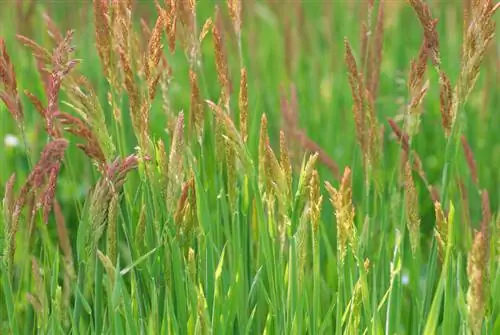
What characterizes red fescue lawns?
Red fescue is an extremely undemanding and hardy grass that thrives on poor soils and in shady locations. It is ideal for ornamental, landscape and utility lawns as well as livestock pasture and grassland in problematic locations.
Red fescue is extremely undemanding
Red fescue is extremely undemanding and extremely hardy. This type of grass thrives easily in very poor soils and does not need to be fertilized. Although this type of grass is considered fertilizer-friendly, it should not be overly spoiled with nutrients - otherwise competing species can be promoted. Red fescue also grows very well in rather shady locations. All of these properties make red fescue appear perfect for locations where sowing lawns doesn't actually seem possible.
Distinguishing between different types of red fescue
The clump-forming, very densely growing varieties are particularly suitable for lawn seeds. In agriculture, for example for sowing grassland or as pasture for livestock, red fescue (Festuca rubra rubra) is mainly used.
Horstrot fescue (Festuca rubra commutata)
The very fine and densely growing horst red fescue is used for ornamental and herb lawns, for meadows and utility purposes
and landscape lawn. It is only moderately resilient (and therefore not suitable for sports and play turf), but it also grows in partially shaded and otherwise problematic locations
Red fescue with short runners (Festuca rubra trichophylla)
This red fescue is also only moderately resilient, but is very undemanding and can be used in a variety of ways.
Red fescue (Festuca rubra rubra)
The foothill red fescue is mainly used for grassland, meadows and pastures in problematic locations.
Also very suitable for pastures and grassland
Although red fescue only has a moderate nutritional value, it is very tolerant of bites (just like the other species can easily be kept very short in conventional lawns) and makes no demands on location, soil or care. Fertilization and watering are basically unnecessary, and the plant prefers a rather barren substrate - perfect for mountainous areas, dry areas and nutrient-poor soils where higher-quality forage grass does not grow.
Tip
In addition to red fescue, other Festuca species are also used for landscape and commercial lawns; for example, the common sheep's fescue (Festuca ovina) and the rough-leaved fescue (Festuca trachyphylla), which thrive primarily in very dry locations.

